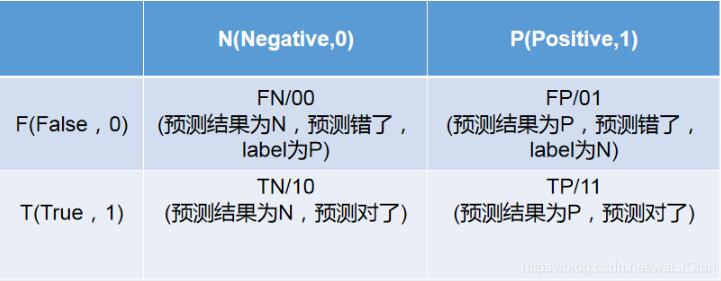詳解java NIO之Channel(通道)
通道(Channel)是java.nio的第二個主要創(chuàng)新。它們既不是一個擴(kuò)展也不是一項(xiàng)增強(qiáng),而是全新、極好的Java I/O示例,提供與I/O服務(wù)的直接連接。Channel用于在字節(jié)緩沖區(qū)和位于通道另一側(cè)的實(shí)體(通常是一個文件或套接字)之間有效地傳輸數(shù)據(jù)。
channel介紹
通道是訪問I/O服務(wù)的導(dǎo)管。I/O可以分為廣義的兩大類別:File I/O和Stream I/O。那么相應(yīng)地有兩種類型的通道也就不足為怪了,它們是文件(file)通道和套接字(socket)通道。我們看到在api里有一個FileChannel類和三個socket通道類:SocketChannel、ServerSocketChannel和DatagramChannel。
通道可以以多種方式創(chuàng)建。Socket通道有可以直接創(chuàng)建新socket通道的工廠方法。但是一個FileChannel對象卻只能通過在一個打開的RandomAccessFile、FileInputStream或FileOutputStream對象上調(diào)用getChannel( )方法來獲取。你不能直接創(chuàng)建一個FileChannel對象。
我們先來看一下FileChannel的用法:
// 創(chuàng)建文件輸出字節(jié)流 FileOutputStream fos = new FileOutputStream('data.txt'); //得到文件通道 FileChannel fc = fos.getChannel(); //往通道寫入ByteBuffer fc.write(ByteBuffer.wrap('Some text '.getBytes())); //關(guān)閉流 fos.close(); //隨機(jī)訪問文件 RandomAccessFile raf = new RandomAccessFile('data.txt', 'rw'); //得到文件通道 fc = raf.getChannel(); //設(shè)置通道的文件位置 為末尾 fc.position(fc.size()); //往通道寫入ByteBuffer fc.write(ByteBuffer.wrap('Some more'.getBytes())); //關(guān)閉 raf.close(); //創(chuàng)建文件輸入流 FileInputStream fs = new FileInputStream('data.txt'); //得到文件通道 fc = fs.getChannel(); //分配ByteBuffer空間大小 ByteBuffer buff = ByteBuffer.allocate(BSIZE); //從通道中讀取ByteBuffer fc.read(buff); //調(diào)用此方法為一系列通道寫入或相對獲取 操作做好準(zhǔn)備 buff.flip(); //從ByteBuffer從依次讀取字節(jié)并打印 while (buff.hasRemaining()){ System.out.print((char) buff.get()); } fs.close();
再來看一下SocketChannel:
SocketChannel sc = SocketChannel.open( ); sc.connect (new InetSocketAddress ('somehost', someport)); ServerSocketChannel ssc = ServerSocketChannel.open( ); ssc.socket( ).bind (new InetSocketAddress (somelocalport)); DatagramChannel dc = DatagramChannel.open( );
可以設(shè)置 SocketChannel 為非阻塞模式(non-blocking mode).設(shè)置之后,就可以在異步模式下調(diào)用connect(), read() 和write()了。如果SocketChannel在非阻塞模式下,此時調(diào)用connect(),該方法可能在連接建立之前就返回了。為了確定連接是否建立,可以調(diào)用finishConnect()的方法。像這樣:
socketChannel.configureBlocking(false);socketChannel.connect(new InetSocketAddress('http://jenkov.com', 80));while(! socketChannel.finishConnect() ){ //wait, or do something else...}
服務(wù)器端的使用經(jīng)常會考慮到非阻塞socket通道,因?yàn)樗鼈兪雇瑫r管理很多socket通道變得更容易。但是,在客戶端使用一個或幾個非阻塞模式的socket通道也是有益處的,例如,借助非阻塞socket通道,GUI程序可以專注于用戶請求并且同時維護(hù)與一個或多個服務(wù)器的會話。在很多程序上,非阻塞模式都是有用的。
調(diào)用finishConnect( )方法來完成連接過程,該方法任何時候都可以安全地進(jìn)行調(diào)用。假如在一個非阻塞模式的SocketChannel對象上調(diào)用finishConnect( )方法,將可能出現(xiàn)下列情形之一:
connect( )方法尚未被調(diào)用。那么將產(chǎn)生NoConnectionPendingException異常。 連接建立過程正在進(jìn)行,尚未完成。那么什么都不會發(fā)生,finishConnect( )方法會立即返回false值。 在非阻塞模式下調(diào)用connect( )方法之后,SocketChannel又被切換回了阻塞模式。那么如果有必要的話,調(diào)用線程會阻塞直到連接建立完成,finishConnect( )方法接著就會返回true值。在初次調(diào)用connect( )或最后一次調(diào)用finishConnect( )之后,連接建立過程已經(jīng)完成。那么SocketChannel對象的內(nèi)部狀態(tài)將被更新到已連接狀態(tài),finishConnect( )方法會返回true值,然后SocketChannel對象就可以被用來傳輸數(shù)據(jù)了。 連接已經(jīng)建立。那么什么都不會發(fā)生,finishConnect( )方法會返回true值。Socket通道是線程安全的。并發(fā)訪問時無需特別措施來保護(hù)發(fā)起訪問的多個線程,不過任何時候都只有一個讀操作和一個寫操作在進(jìn)行中。請記住,sockets是面向流的而非包導(dǎo)向的。它們可以保證發(fā)送的字節(jié)會按照順序到達(dá)但無法承諾維持字節(jié)分組。某個發(fā)送器可能給一個socket寫入了20個字節(jié)而接收器調(diào)用read( )方法時卻只收到了其中的3個字節(jié)。剩下的17個字節(jié)還是傳輸中。由于這個原因,讓多個不配合的線程共享某個流socket的同一側(cè)絕非一個好的設(shè)計(jì)選擇。
最后再看一下DatagramChannel:
最后一個socket通道是DatagramChannel。正如SocketChannel對應(yīng)Socket,ServerSocketChannel對應(yīng)ServerSocket,每一個DatagramChannel對象也有一個關(guān)聯(lián)的DatagramSocket對象。不過原命名模式在此并未適用:“DatagramSocketChannel”顯得有點(diǎn)笨拙,因此采用了簡潔的“DatagramChannel”名稱。
正如SocketChannel模擬連接導(dǎo)向的流協(xié)議(如TCP/IP),DatagramChannel則模擬包導(dǎo)向的無連接協(xié)議(如UDP/IP):
創(chuàng)建DatagramChannel的模式和創(chuàng)建其他socket通道是一樣的:調(diào)用靜態(tài)的open( )方法來創(chuàng)建一個新實(shí)例。新DatagramChannel會有一個可以通過調(diào)用socket( )方法獲取的對等DatagramSocket對象。DatagramChannel對象既可以充當(dāng)服務(wù)器(監(jiān)聽者)也可以充當(dāng)客戶端(發(fā)送者)。如果你希望新創(chuàng)建的通道負(fù)責(zé)監(jiān)聽,那么通道必須首先被綁定到一個端口或地址/端口組合上。綁定DatagramChannel同綁定一個常規(guī)的DatagramSocket沒什么區(qū)別,都是委托對等socket對象上的API實(shí)現(xiàn)的:
DatagramChannel channel = DatagramChannel.open( ); DatagramSocket socket = channel.socket( ); socket.bind (new InetSocketAddress (portNumber));
DatagramChannel是無連接的。每個數(shù)據(jù)報(datagram)都是一個自包含的實(shí)體,擁有它自己的目的地址及不依賴其他數(shù)據(jù)報的數(shù)據(jù)凈荷。與面向流的的socket不同,DatagramChannel可以發(fā)送單獨(dú)的數(shù)據(jù)報給不同的目的地址。同樣,DatagramChannel對象也可以接收來自任意地址的數(shù)據(jù)包。每個到達(dá)的數(shù)據(jù)報都含有關(guān)于它來自何處的信息(源地址)。
一個未綁定的DatagramChannel仍能接收數(shù)據(jù)包。當(dāng)一個底層socket被創(chuàng)建時,一個動態(tài)生成的端口號就會分配給它。綁定行為要求通道關(guān)聯(lián)的端口被設(shè)置為一個特定的值(此過程可能涉及安全檢查或其他驗(yàn)證)。不論通道是否綁定,所有發(fā)送的包都含有DatagramChannel的源地址(帶端口號)。未綁定的DatagramChannel可以接收發(fā)送給它的端口的包,通常是來回應(yīng)該通道之前發(fā)出的一個包。已綁定的通道接收發(fā)送給它們所綁定的熟知端口(wellknown port)的包。數(shù)據(jù)的實(shí)際發(fā)送或接收是通過send( )和receive( )方法來實(shí)現(xiàn)的。
注意:假如您提供的ByteBuffer沒有足夠的剩余空間來存放您正在接收的數(shù)據(jù)包,沒有被填充的字節(jié)都會被悄悄地丟棄。
Scatter/Gather
通道提供了一種被稱為Scatter/Gather的重要新功能(有時也被稱為矢量I/O)。它是指在多個緩沖區(qū)上實(shí)現(xiàn)一個簡單的I/O操作。對于一個write操作而言,數(shù)據(jù)是從幾個緩沖區(qū)按順序抽取(稱為gather)并沿著通道發(fā)送的。緩沖區(qū)本身并不需要具備這種gather的能力(通常它們也沒有此能力)。該gather過程的效果就好比全部緩沖區(qū)的內(nèi)容被連結(jié)起來,并在發(fā)送數(shù)據(jù)前存放到一個大的緩沖區(qū)中。對于read操作而言,從通道讀取的數(shù)據(jù)會按順序被散布(稱為scatter)到多個緩沖區(qū),將每個緩沖區(qū)填滿直至通道中的數(shù)據(jù)或者緩沖區(qū)的最大空間被消耗完。
scatter / gather經(jīng)常用于需要將傳輸?shù)臄?shù)據(jù)分開處理的場合,例如傳輸一個由消息頭和消息體組成的消息,你可能會將消息體和消息頭分散到不同的buffer中,這樣你可以方便的處理消息頭和消息體。
Scattering Reads是指數(shù)據(jù)從一個channel讀取到多個buffer中。如下圖描述:

代碼示例如下:
ByteBuffer header = ByteBuffer.allocateDirect (10); ByteBuffer body = ByteBuffer.allocateDirect (80); ByteBuffer [] buffers = { header, body }; int bytesRead = channel.read (buffers);
Gathering Writes是指數(shù)據(jù)從多個buffer寫入到同一個channel。如下圖描述:

代碼示例如下:
ByteBuffer header = ByteBuffer.allocateDirect (10); ByteBuffer body = ByteBuffer.allocateDirect (80); ByteBuffer [] buffers = { header, body }; channel.write(bufferArray);
使用得當(dāng)?shù)脑挘琒catter/Gather會是一個極其強(qiáng)大的工具。它允許你委托操作系統(tǒng)來完成辛苦活:將讀取到的數(shù)據(jù)分開存放到多個存儲桶(bucket)或者將不同的數(shù)據(jù)區(qū)塊合并成一個整體。這是一個巨大的成就,因?yàn)椴僮飨到y(tǒng)已經(jīng)被高度優(yōu)化來完成此類工作了。它節(jié)省了您來回移動數(shù)據(jù)的工作,也就避免了緩沖區(qū)拷貝和減少了您需要編寫、調(diào)試的代碼數(shù)量。既然您基本上通過提供數(shù)據(jù)容器引用來組合數(shù)據(jù),那么按照不同的組合構(gòu)建多個緩沖區(qū)陣列引用,各種數(shù)據(jù)區(qū)塊就可以以不同的方式來組合了。下面的例子好地詮釋了這一點(diǎn):
public class GatheringTest { private static final String DEMOGRAPHIC = 'output.txt'; public static void main (String [] argv) throws Exception { int reps = 10; if (argv.length > 0) { reps = Integer.parseInt(argv[0]); } FileOutputStream fos = new FileOutputStream(DEMOGRAPHIC); GatheringByteChannel gatherChannel = fos.getChannel(); ByteBuffer[] bs = utterBS(reps); while (gatherChannel.write(bs) > 0) { // 不做操作,讓通道把數(shù)據(jù)輸出到文件寫完 } System.out.println('Mindshare paradigms synergized to ' + DEMOGRAPHIC); fos.close(); } private static String [] col1 = { 'Aggregate', 'Enable', 'Leverage', 'Facilitate', 'Synergize', 'Repurpose', 'Strategize', 'Reinvent', 'Harness' }; private static String [] col2 = { 'cross-platform', 'best-of-breed', 'frictionless', 'ubiquitous', 'extensible', 'compelling', 'mission-critical', 'collaborative', 'integrated' }; private static String [] col3 = { 'methodologies', 'infomediaries', 'platforms', 'schemas', 'mindshare', 'paradigms', 'functionalities', 'web services', 'infrastructures' }; private static String newline = System.getProperty ('line.separator'); private static ByteBuffer [] utterBS (int howMany) throws Exception { List list = new LinkedList(); for (int i = 0; i < howMany; i++) { list.add(pickRandom(col1, ' ')); list.add(pickRandom(col2, ' ')); list.add(pickRandom(col3, newline)); } ByteBuffer[] bufs = new ByteBuffer[list.size()]; list.toArray(bufs); return (bufs); } private static Random rand = new Random( ); /** * 隨機(jī)生成字符 * @param strings * @param suffix * @return * @throws Exception */ private static ByteBuffer pickRandom (String [] strings, String suffix) throws Exception { String string = strings [rand.nextInt (strings.length)]; int total = string.length() + suffix.length( ); ByteBuffer buf = ByteBuffer.allocate (total); buf.put (string.getBytes ('US-ASCII')); buf.put (suffix.getBytes ('US-ASCII')); buf.flip( ); return (buf); }}
輸出為:
Reinvent integrated web services Aggregate best-of-breed platforms Harness frictionless platforms Repurpose extensible paradigms Facilitate ubiquitous methodologies Repurpose integrated methodologies Facilitate mission-critical paradigms Synergize compelling methodologies Reinvent compelling functionalities Facilitate extensible platforms
雖然這種輸出沒有什么意義,但是gather確是很容易的讓我們把它輸出出來。
Pipe
java.nio.channels包中含有一個名為Pipe(管道)的類。廣義上講,管道就是一個用來在兩個實(shí)體之間單向傳輸數(shù)據(jù)的導(dǎo)管。Java NIO 管道是2個線程之間的單向數(shù)據(jù)連接。Pipe有一個source通道和一個sink通道。數(shù)據(jù)會被寫到sink通道,從source通道讀取。Pipe類創(chuàng)建一對提供環(huán)回機(jī)制的Channel對象。這兩個通道的遠(yuǎn)端是連接起來的,以便任何寫在SinkChannel對象上的數(shù)據(jù)都能出現(xiàn)在SourceChannel對象上。
下面我們來創(chuàng)建一條Pipe,并向Pipe中寫數(shù)據(jù):
//通過Pipe.open()方法打開管道Pipe pipe = Pipe.open();//要向管道寫數(shù)據(jù),需要訪問sink通道Pipe.SinkChannel sinkChannel = pipe.sink();//通過調(diào)用SinkChannel的write()方法,將數(shù)據(jù)寫入SinkChannelString newData = 'New String to write to file...' + System.currentTimeMillis();ByteBuffer buf = ByteBuffer.allocate(48);buf.clear();buf.put(newData.getBytes());buf.flip();while(buf.hasRemaining()) { sinkChannel.write(buf);}
再看如何從管道中讀取數(shù)據(jù):
讀取管道的數(shù)據(jù),需要訪問source通道:
Pipe.SourceChannel sourceChannel = pipe.source();
調(diào)用source通道的read()方法來讀取數(shù)據(jù):
ByteBuffer buf = ByteBuffer.allocate(48);int bytesRead = sourceChannel.read(buf);
read()方法返回的int值會告訴我們多少字節(jié)被讀進(jìn)了緩沖區(qū)。
到此我們就把通道的簡單用法講完了,要想會用還是得多去練習(xí),多模擬使用,這樣才知道什么時候用以及怎么用,下節(jié)我們來講選擇器-Selectors。
以上就是詳解java NIO之Channel(通道)的詳細(xì)內(nèi)容,更多關(guān)于JAVA NIO channel(通道)的資料請關(guān)注好吧啦網(wǎng)其它相關(guān)文章!
相關(guān)文章:
1. ASP常用日期格式化函數(shù) FormatDate()2. Python 操作 MySQL數(shù)據(jù)庫3. Python數(shù)據(jù)相關(guān)系數(shù)矩陣和熱力圖輕松實(shí)現(xiàn)教程4. 開發(fā)效率翻倍的Web API使用技巧5. bootstrap select2 動態(tài)從后臺Ajax動態(tài)獲取數(shù)據(jù)的代碼6. CSS3中Transition屬性詳解以及示例分享7. js select支持手動輸入功能實(shí)現(xiàn)代碼8. 什么是Python變量作用域9. vue使用moment如何將時間戳轉(zhuǎn)為標(biāo)準(zhǔn)日期時間格式10. python 如何在 Matplotlib 中繪制垂直線

 網(wǎng)公網(wǎng)安備
網(wǎng)公網(wǎng)安備